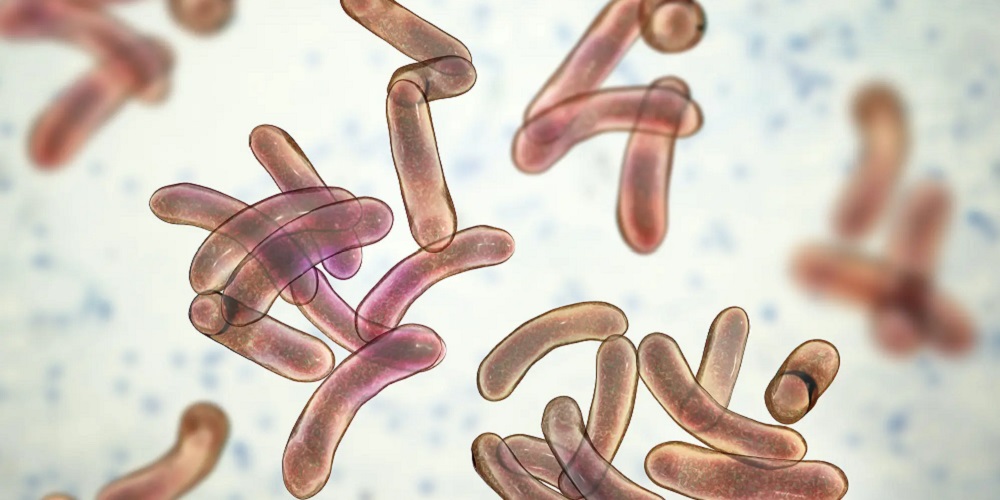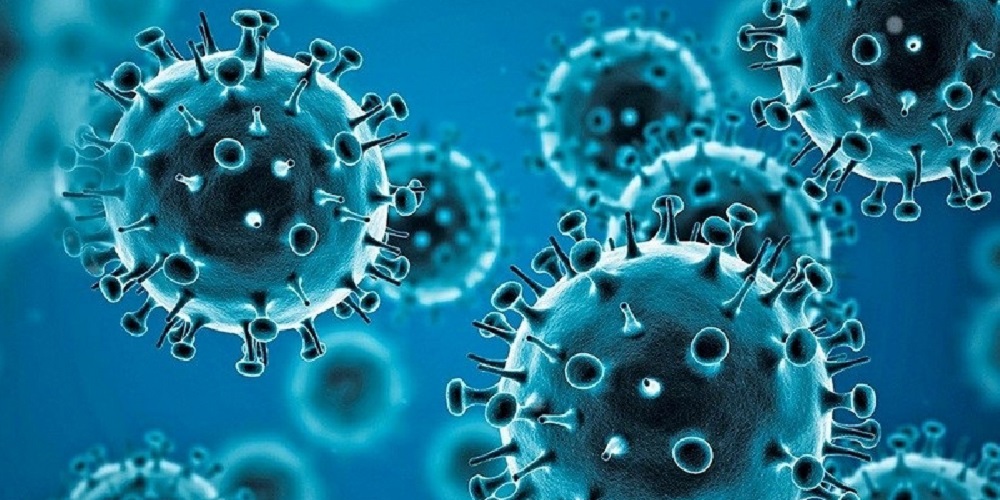Health
3 Warning Signs of Diabetes You Must Never Overlook

Diabetes is a chronic condition that, if left undetected, can lead to severe health complications. Early identification of diabetes symptoms can help you take preventive measures and avoid significant damage to your health. In this article, we explore the warning signs of diabetes that should never be ignored. Recognizing these signs early can make all the difference in managing this condition effectively.
What is Diabetes?
Diabetes is a metabolic disorder that occurs when your body cannot regulate blood sugar levels effectively. This condition is primarily caused by either insufficient insulin production (Type 1 diabetes) or the body’s inability to use insulin properly (Type 2 diabetes). Over time, high blood sugar levels can damage vital organs, nerves, and blood vessels, making early detection and intervention crucial.
3 Warning Signs of Diabetes
1. Constant Thirst (Polydipsia)
If you find yourself feeling excessively thirsty even after drinking water, especially in cooler weather, this could be a warning sign of diabetes. Constant thirst occurs because high blood sugar levels lead to increased urination, which dehydrates the body. This persistent dehydration triggers your brain to demand more fluids.
What to Do: If you experience unrelenting thirst despite staying hydrated, consult a healthcare provider to check your blood sugar levels.
2. Slow-Healing Wounds
Another critical sign of diabetes is delayed wound healing. High blood sugar levels impair the body’s ability to repair tissues and fight infections. You might notice that even small cuts or bruises take an unusually long time to heal.
Why It Happens: Prolonged exposure to high glucose levels damages blood vessels, reducing the supply of nutrients and oxygen needed for healing.
What to Do: Seek medical attention immediately to address slow-healing wounds and prevent complications like infections or ulcers.
3. Dry and Itchy Skin
Persistent dry or itchy skin, often mistaken for a rash, can also indicate diabetes. This symptom occurs because high blood sugar can cause dehydration and poor circulation, affecting the skin’s ability to retain moisture.
Other Skin Conditions: Diabetes can also lead to specific skin issues like acanthosis nigricans (dark, velvety patches) or bacterial and fungal infections.
What to Do: If you notice unusual itchiness or dryness, consult a doctor for a thorough evaluation of your blood sugar levels.
Additional Symptoms of Diabetes
While the above signs are critical, other symptoms may indicate diabetes as well:
Symptom Description
Frequent urination: The body tries to get rid of excess glucose through urine.
Unexplained weight loss: The body burns fat and muscle for energy when glucose is unavailable.
Fatigue: High or low blood sugar levels affect energy production.
Blurry vision: High glucose levels can cause swelling in the eye lenses.
Preventive Steps for Diabetes
Early detection of diabetes symptoms can help you take steps to manage or prevent complications. Below are essential lifestyle changes to consider:
Healthy Diet: Consume a balanced diet rich in whole grains, lean proteins, and vegetables.
Regular Exercise: Physical activity helps the body use insulin effectively. Aim for at least 30 minutes of moderate exercise daily.
Regular Health Check-Ups: Monitor blood sugar levels regularly, especially if you have a family history of diabetes.
Stay Hydrated: Drinking plenty of water can help regulate blood sugar levels.
FAQs About Diabetes
1. What are the early signs of diabetes?
Early signs include excessive thirst, frequent urination, unexplained weight loss, fatigue, and dry or itchy skin.
2. Can diabetes be reversed?
Type 2 diabetes can sometimes be managed or even reversed through lifestyle changes such as diet, exercise, and weight loss. However, Type 1 diabetes requires lifelong insulin therapy.
3. Is dry skin always a sign of diabetes?
Not always. Dry skin can also result from weather changes, dehydration, or other skin conditions. However, persistent dryness accompanied by other symptoms may indicate diabetes.
4. What foods can help control diabetes?
Foods like leafy greens, whole grains, nuts, seeds, and omega-3-rich fish (salmon, sardines) can help regulate blood sugar levels.
5. How is diabetes diagnosed?
Diabetes is diagnosed through blood tests such as fasting blood sugar, HbA1c, or an oral glucose tolerance test.
What do diabetic legs look like?
Diabetic legs can exhibit a range of symptoms, including:
Poor wound healing: Cuts and sores may take a long time to heal or may not heal at all due to nerve damage and reduced blood flow.
Skin infections: People with diabetes are more susceptible to skin infections, especially in areas with poor circulation.
Darkened skin: The skin on the legs may appear thickened and discolored, often in a brownish or purplish hue. This is a sign of poor blood flow.
Swelling: Legs may appear swollen due to fluid retention or poor circulation.
Loss of hair: Hair loss on the legs can be a sign of peripheral neuropathy, a nerve damage associated with diabetes.
Shiny skin: The skin on the legs may appear shiny and taut due to a loss of elasticity.
Does drinking hot water reduce blood sugar?
There is no scientific evidence to support the claim that drinking hot water directly reduces blood sugar levels. However, staying hydrated is important for overall health, including blood sugar management.
How can I flush sugar out of my system fast?
The body naturally processes and removes sugar from the bloodstream. However, there are no quick fixes to “flush out” excess sugar. Here are some general tips for managing blood sugar levels:
Maintain a healthy diet: Focus on whole foods, such as fruits, vegetables, and whole grains. Limit processed foods, sugary drinks, and refined carbohydrates.
Regular exercise: Physical activity helps your body use insulin more effectively.
Manage stress: Stress can raise blood sugar levels. Find healthy ways to manage stress, such as yoga, meditation, or spending time in nature.
Medications: If prescribed by a doctor, take diabetes medications as directed.
What part of the body itches with diabetes?
Itching is a common symptom of diabetes, often caused by dry skin and nerve damage. Common areas that may itch include:
Hands
Feet
Legs
Groin
Underarms
What should diabetics drink first thing in the morning?
There is no single “best” drink for diabetics first thing in the morning. However, staying hydrated is important. Here are some options:
Water: Plain water is always a good choice.
Unsweetened tea or coffee: These can be enjoyed in moderation.
Unsweetened plant-based milk: Options like almond milk or soy milk can be a good source of calcium and vitamin D.
Conclusion
Recognizing the warning signs of diabetes—such as constant thirst, slow-healing wounds, and dry skin—is critical in preventing severe complications. Early detection allows for timely intervention, whether through lifestyle changes or medical treatment.
If you experience any of the symptoms mentioned, consult a healthcare provider immediately. Taking proactive steps can improve your quality of life and help you manage diabetes effectively.
Health
Three die in Rivers cholera outbreak

Three persons are feared dead in a suspected cholera outbreak in the Isiodum community of Andoni Local Government Area of Rivers State.
It was gathered that the incident was discovered when a team from a multinational oil company visited the community to inspect a water rehabilitation project in the area.
A former Chairman of Andoni Local Government Area, Dr Gogo-Ogute Isaiah, who said he was with the oil firm working on the water rehabilitation project in the area, confirmed the incident in a statement on Saturday.
Isaiah said two of the three victims were from the same compound in the Isiodum community.
He said the duo were vomiting and shooting constantly before passing out, leading to their demise on Friday, while the third person died on Saturday.
Isaiah said, “I was in my community, Unyeada, this morning with a team of engineers from Bopean Totalelf to inspect the ongoing water rehabilitation project in Unyeada Town when the news of a suspected cholera outbreak in Isiodum got to me.
“Last night two people from the same compound of Isiodum community in Andoni local government Area named, Mr Micheal Agba and Mrs Abigail Rowland died through constant vomiting and stooling,
“As the battle to resuscitate others who are also attacked by the same disease continues, this morning, January 11th, 2025, one Mrs EkenereAwaji Loveday has just been reported dead. Others including Mrs. Amos Asitor are in a very critical condition as means to access medical attention in the area is nearly impossible.”
When contacted, media aide to the State Commissioner for Health, Ednah Alete, said she had yet to get a report of the incident, stating that she had sent the information to the Head of Disease Control in the state Ministry of Health and was awaiting response.
She, however, said the process of confirming an outbreak of the disease was procedural, including a team from the ministry visiting the community to take samples.
Health
10 Things to Know About Asthma and How to Live Better with the Disease

According to the World Health Organization (WHO) and the Global Asthma Network, up to 334 million people worldwide may be suffering from asthma. In Africa, the prevalence ranges from 4 to 22%.
Doctor Ali Baddredine, a private pulmonologist based in the Senegalese capital Dakar, has enlightened us on the causes, symptoms, and tips for living better with asthma.
What is Asthma?.
Asthma is a chronic respiratory disease that manifests with difficult breathing and wheezing.
It causes difficult breathing and a feeling of suffocation caused by inflammation and contraction of the muscles around the airways, making breathing more difficult for the subject.
Asthma is a disease with no cure, but you can manage it.
“In fact, asthma is a chronic inflammatory disease of the lower airways, specifically the bronchial tubes, and it is defined by the presence of respiratory symptoms. These are the clinical signs, namely respiratory discomfort.
“That is why we call it wheezing Disney. It can also manifest itself as a dry cough or a feeling of chest tightness. All these symptoms vary in time and intensity,” Dr. Baddredine tells us.
Asthma is a disease that affects the lungs.
What are the symptoms of asthma?
Asthma affects the lungs: Symptoms can appear in the form of cough, wheezing, shortness of breath after more or less intense exercise, a feeling of tightness in the rib cage (in the chest), wheezing, or difficulty breathing normally.
“The frequency and intensity of asthma symptoms can differ from one person to another and depending on the time of the day. It is generally more common at night or early in the morning,” according to Dr. Ali Baddredine.
What are the contributing or triggering factors?
Several factors can trigger asthma symptoms or make them worse.
Genetic predisposition to allergy combined with external environmental factors often triggers the disease.
Inhaling irritating vapors or smoke can cause respiratory distress or an attack in a person who is asthmatic. Some smoke is particularly harmful, such as tobacco smoke, which contains many irritating substances that can aggravate inflammation of the bronchi and trigger an asthma attack.
Prolonged exposure to allergenic substances such as pollens, dust mites, dust, animal hair, mold, household aerosols, solvents, and certain perfumes can also trigger an asthma attack.
“You know that asthma is still a multifactorial disease where several factors are responsible for these manifestations to intervene.
“It has a genetic, hereditary component even if not all asthma is hereditary. And above all, you have the environmental factors, viral infections, pollution in particular, and allergenic exposures.
“You can also have asthma that has an allergic origin without forgetting the irritating factors, especially in our region with incense, atmospheric pollution with all these exhaust gases, temperature variations, air cooling, humidity levels, sand dust,” Dr. Baddredine points out.
What is the link between climate change and asthma?
People with asthma are among the most vulnerable to the effects of climate change. It acts in different ways on the respiratory health of people at risk.
It influences the health of the respiratory tract since the lungs are in direct contact with the outside world and are the first to be exposed to all types of irritation.
According to specialists, asthma attacks are often triggered by pollutants and allergens such as pollen, exhaust fumes (traffic pollution), air pollution (such as the one caused by forest fires), heatwaves, wildfires, dust storms, floods, and increased humidity.
All these elements lead to hyperreactivity because the asthmatic has branches that are hyperreactive, so these will react to the aggressive factors attacking the bronchial mucosa and the reaction that follows, which is bronchospasm or cough caused by different inflammatory phenomena,” Dr. Baddredine warns.
Who is at risk?
Asthma affects people of all ages but particularly younger people. Although the genetic factor is established, the transmission of asthma from parents to children is not systematic.
Although there is no typical profile of people prone to asthma, some people are more likely to develop asthma than others.
This includes people with a family history of asthma, allergic rhinitis or eczema, those born prematurely, children who have had severe and repeated respiratory infections (pneumonia, rhinovirus infection, respiratory syncytial virus, etc.), people who suffer from obesity, those exposed to second-hand smoke and air pollution for a long time, and those with gastroesophageal reflux disease.
According to Doctor Ali Baddredine, “we cannot strictly speak of people at risk because this is not a disease influenced by certain factors, so we cannot speak of risk.
It is true that when you have infants who have repetitive viral infections, it can promote what we call bronchial hyperreactivity, and it makes them wheezy and then asthmatic. But we cannot speak frankly about a population at risk.
It is not like, for example, high blood pressure, or those are subjects who are malnourished, who have excessive consumption of salt, of products that can lead to high blood pressure.
What is the difference between asthma and sinusitis?
Chronic sinusitis is often associated with asthma, but unlike asthma, which affects the lungs, sinusitis affects the sinuses. It is present in almost all patients with asthma symptoms.
The frequent association of asthma and sinusitis comes from the fact that people who suffer from allergic asthma have a greater risk of suffering from sinusitis due to greater sensitivity of their respiratory mucosa.
The specialist’s opinion: “Sinusitis is, in fact, inflammation of the upper airways, and the sinuses are particular, but it has a correlation. There is a similarity of the nasal-sinus and bronchial mucosa.
Not all asthma is associated with sinusitis, but when you have sinusitis, you have to start managing it because in the long run, as it is the same mucous membrane, the inflammation will go down from the upper airways to the lower airways, bronchial, and therefore turn into asthma.
How to treat asthma?
It is important to know that the best treatment for asthma remains prevention. This involves patient education.
To avoid an asthma attack, patients are advised not to smoke or frequent smoky places, to avoid exposure to factors that can trigger or promote the disease, and to avoid using products that can irritate the respiratory tract (like paints, glues, household products, etc.).
If avoiding triggers is not sufficient to maintain good symptom control, people with asthma are recommended to use inhaled corticosteroids, which can treat persistent inflammation in the airways.
“As we have said, it is a chronic inflammatory disease of the bronchi, which means that we must consider having basic treatment and regular monitoring. First of all, we must start by educating the patient. Patient education is awareness of the disease, how to prevent crises that are episodes that can make the disease more serious.
There is a whole therapeutic arsenal, but you actually have to educate the patient to use them correctly because there are different stages of asthma. In fact, you have asthma that we call latent because it does not manifest itself all the time, that is mild, intermittent during a stable period, with no symptoms.
On the other hand, you have some subjects who must be monitored with regular follow-up with the pulmonologist, a functional exploration that has made it possible to quantify asthma and adapt the basic treatment and classify it,” Dr. Ali Baddredine says.
Asthma symptoms can be controlled with inhaled medications.
Can asthmatic patients play sports?
Physical activity goes well and is even recommended when asthma is well controlled.
It is possible to reconcile illness and regular sporting activity. Sports allow the acquisition of good muscle mass and improve stress management in people with asthma.
“Sport is one of the cornerstones of treatment. You have athletes and great champions who are asthmatic; the whole point is to manage your asthma well, in fact, and there are treatments that prevent asthma and even asthma products that are not classified as doping products,” Dr. Baddredine notes.
Swimming and aquagym, cycling, walking at a good pace are beneficial for asthmatics.
Running, especially endurance running in cold weather, can cause asthma attacks. To prevent it, the asthmatic must take a bronchodilator 10 to 15 minutes before the race and do a careful warm-up.
Physical activities must be personalized and adapted according to the patient’s age and respiratory performance. People with asthma symptoms should consult a healthcare professional before engaging in sporting activity.
Does asthma kill?
Poorly controlled asthma can cause permanent symptoms.
“Oh yes, as much as asthma can be gentle, an attack can take the patient away. You have what we call severe acute asthma. This is a spontaneous serious crisis that can land the patient in intensive care.
There are some people who have interrupted their treatment without medical advice and who have a particular psychological context because there is a psychogenic component of severe asthma attacks, and it is like that especially for adolescents, young girls.
Despite all the therapeutic arsenal we have, we must also not forget that sometimes there are some diagnostic errors, which can be an overdiagnosis of asthma. We can have subjects who have died of what we call an asthma equivalent, especially elderly subjects; they have what we call pseudo-cardiac asthma.
So sometimes we say they died of asthma when they died of another disease that resembles asthma, especially in the elderly,” Dr. Ali Baddredine warns.
Asthma can be a serious illness, but it can also be managed with appropriate treatment.
Poorly controlled asthma can cause irreversible symptoms and lead to an attack or respiratory distress, and that can be fatal.
During an attack, the opening of the bronchi is reduced due to a significant inflammatory reaction and contraction of the muscles in the wall of the bronchi. Normal breathing becomes almost impossible for the patient.
Although attacks can be effectively calmed by medication, they are potentially dangerous, especially in vulnerable people (young children, elderly people, those suffering from a respiratory infection, etc.).
Inflammation of the respiratory tract produces thick mucus inside the bronchi, and this hinders air circulation.
Living with asthma is a difficult challenge, but it is not impossible to meet as long as you follow a few daily rules.
By adopting a healthy lifestyle, avoiding triggers, and following appropriate treatment, it is possible to control the disease and lead a full and active life, virtually symptom-free.
Health
WHO declares a new COVID outbreak in China global health emergency

The World Health Organization, WHO, has declared the outbreak of a new coronavirus in China, a global health emergency.
The WHO Director-General Tedros Ghebreyesus made the announcement at a press conference in Geneva.
WHO’s emergency committee on the epidemic had reportedly met Thursday afternoon and recommended designating the outbreak of the Public Health Emergency of International Concern, PHEIC.
The decision had been “almost unanimous,” Didier Houssin, chair of the emergency committee, said at the press conference.
“The main reason for this declaration is not because of what is happening in China, but because of what is happening in other countries,” Tedros said at the press conference.
“Our greatest concern is the potential for the virus to spread to countries with weaker health systems and which are ill-prepared to deal with it. Let me be clear, this declaration is not a vote of no confidence in China. On the contrary, WHO continues to have confidence in China’s capacity to control the outbreak.”
Tedros also outlined recommendations made by the emergency committee to control the outbreak, including accelerating the development of vaccines and drugs and combatting the spread of misinformation.
This is the sixth time WHO has used that label, Public Health Emergency of International Concern, PHEIC. since the designation was introduced 15 years ago.
-

 Economy22 hours ago
Economy22 hours agoSEE Today’s Black Market Dollar (USD) To Naira (NGN) Exchange Rate – January 15, 2025
-

 News22 hours ago
News22 hours agoFinally, DSS gets first female Deputy Director General
-

 News17 hours ago
News17 hours agoFG to pardon convicts, unveils advisory committee
-

 News5 hours ago
News5 hours agoHURIWA Slams Tinubu’s Misstep in Current Humanitarian Affairs Ministry Leadership
-

 News22 hours ago
News22 hours agoOtedola Vs Obaigbena: Crude oil cargo owned by General Hydrocarbons arrested
-

 Metro6 hours ago
Metro6 hours ago2 arrested in Kano, Nasarawa over terrorism financing, fake $160,000
-

 News20 hours ago
News20 hours agoUnattended corpse on Wurukum-Akpehe road raises health voncerns +Photo
-

 News17 hours ago
News17 hours agoMorocco dethrones Egypt, becomes main popular destination for tourist to Africa

















